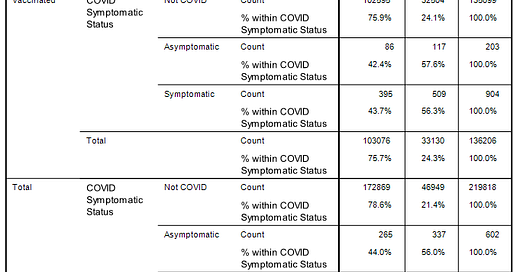Emergency Department Admissions: Analysis of ECDS Dataset (part 3)
Further analysis of an ECDS data dump of 237k adult admissions records to the emergency departments of an undisclosed UK NHS Trust: COVID arrival mode & discharge
Today I am going to pursue the COVID question further by looking at arrival mode & discharge using the new, improved, whiter-than-white ECDS dataset. Here’s arrival mode in the raw, cross-tabulated by its re-coded form:
If we get out hand-held trusty calculators out we shall discover, as we discovered with the CDS 010 dataset, that the vast majority of admissions to the emergency department are not by ambulance of some sort (71.4%). If I do the same raw vs. re-coded trick with discharge destination we get this table:




